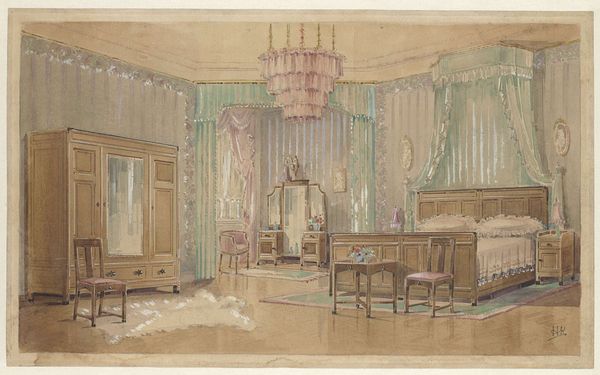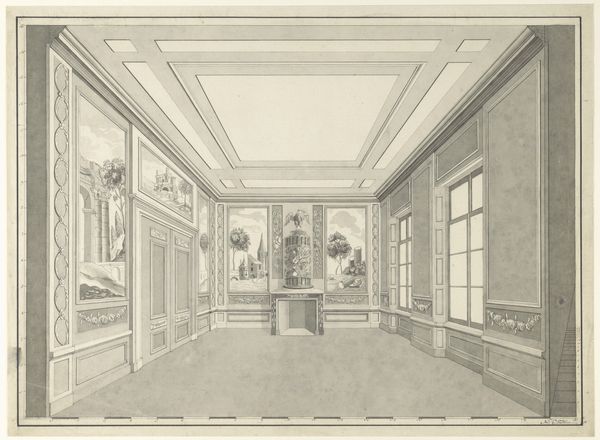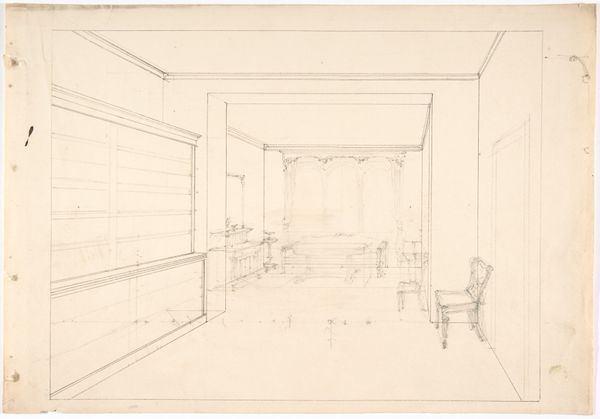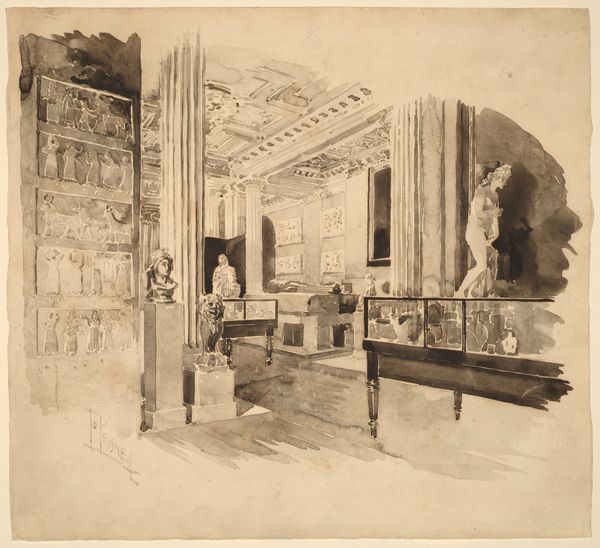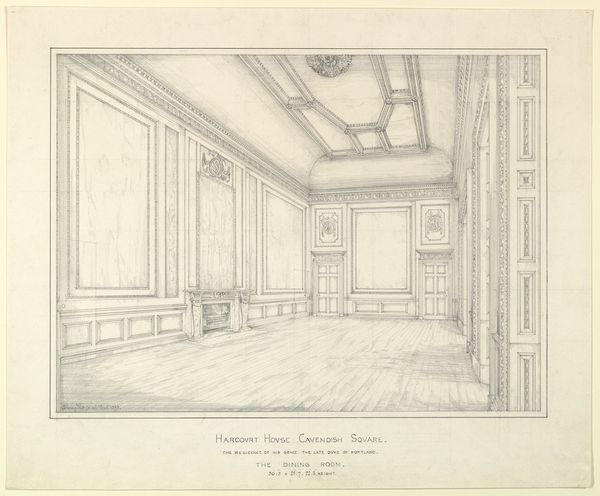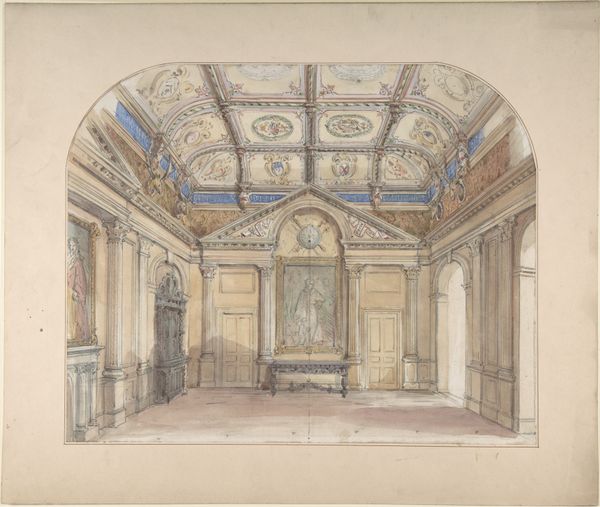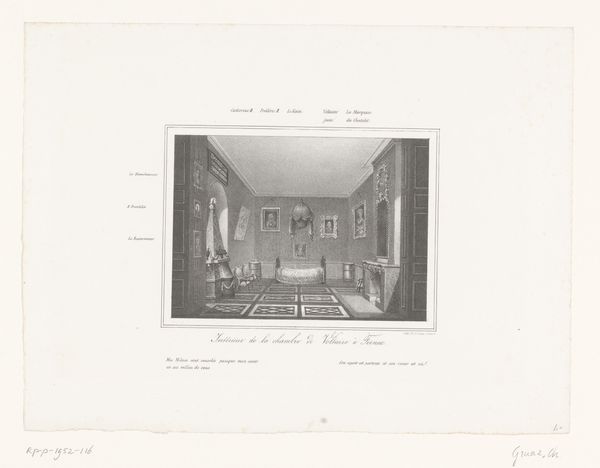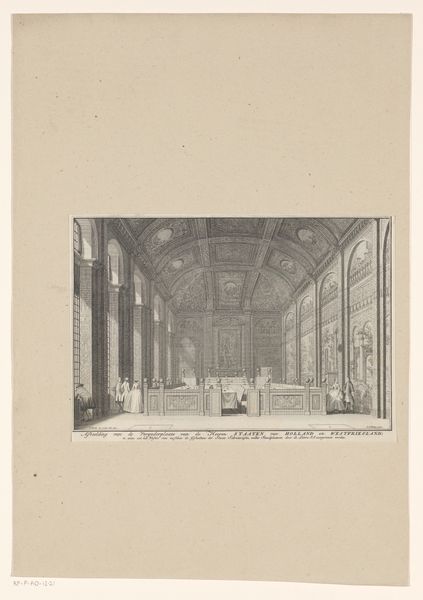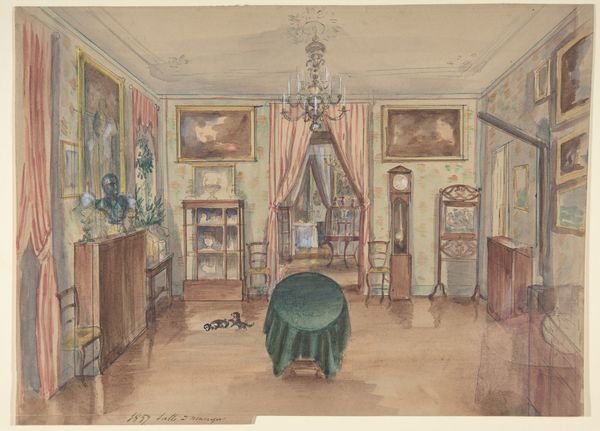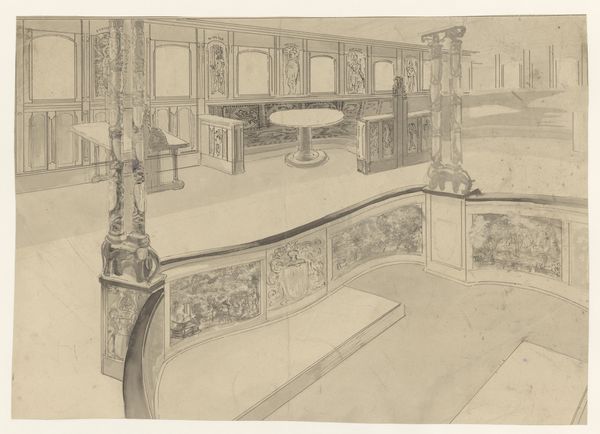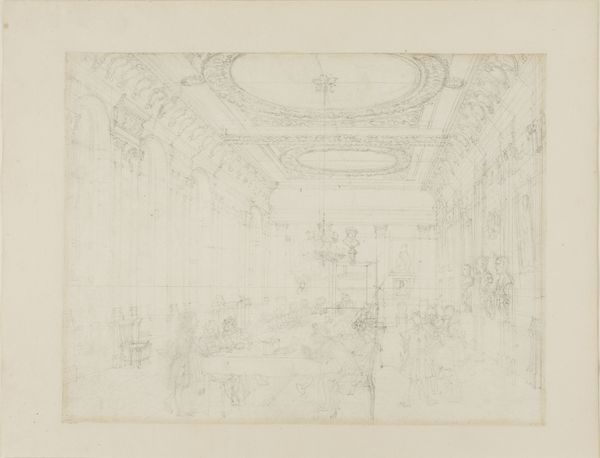
drawing, paper, watercolor, ink
#
drawing
#
paper
#
watercolor
#
ink
#
geometric
#
romanticism
#
cityscape
#
academic-art
#
realism
Dimensions: height 146 mm, width 220 mm, height 216 mm, width 290 mm
Copyright: Rijks Museum: Open Domain
Curator: This is "Ontwerp (?) voor een interieur," or "Design (?) for an Interior," attributed to Fritz Werner, possibly from 1848. The piece combines ink and watercolor on paper. Editor: My first impression is one of quiet formality. The palette is muted, almost ghostly, and the space feels both grand and strangely uninhabited. Curator: Indeed. Werner's command of perspective creates a convincing sense of depth. Note how the geometric floor pattern recedes, drawing the eye through the sequence of rooms. Also, observe how light from the window on the left establishes an interplay of illumination and shadow. The materiality is key here, emphasizing light, shadow, shape, and balance in the picture plane. Editor: But that light isn't neutral. The cool illumination seems to wash over a room staged, I would venture to say, for male authority, given the portraits. Yet, is the ambiguity implied in its title perhaps pointing to larger shifts in gender or class during this time? Who inhabits these rooms, and whose gaze does this scene construct? It certainly isn’t representing the servants who labored in these spaces. Curator: That is not necessarily apparent solely by analyzing the internal qualities of the artwork, I believe. But from a social perspective, you may have a valid argument. However, in the portraits adorning the wall, in their empty frames and repetitive sequence, don’t you sense an inquiry into representation itself, an echo of what portraiture seeks to achieve and invariably falls short of doing? I also think it relates to the use of space here, in the artist’s attempt to render, in his time, this reality. Editor: Yes, and it’s impossible not to see the absences within this "realism." Where is the mess of life? Are these the bare bones of bourgeois aspirations? What does it suggest to imagine this as part of a move away from revolution that then defines domesticity for generations? Curator: That could lead to interesting interpretations! By examining the composition and exploring those questions, we appreciate the formal sophistication of Werner's construction and also invite critical reflections on its historical context. Editor: I agree. This initial, ghostly interior allows for discussions about history and also offers ways of considering interiority.
Comments
No comments
Be the first to comment and join the conversation on the ultimate creative platform.
